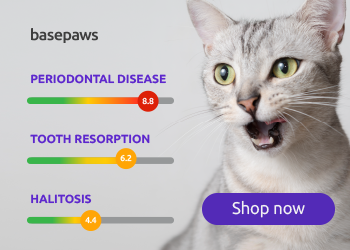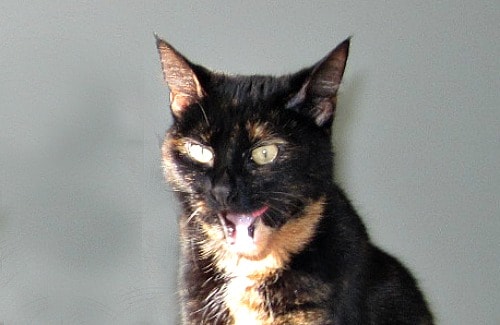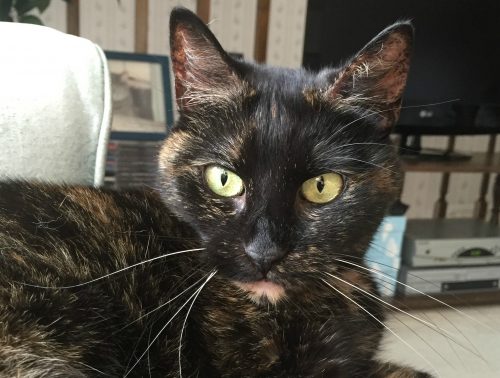
Tooth resorption is a common condition in cats, affecting 20 to 60 percent of adult cats and close to 75 percent of cats five years or older. It is a painful condition and the most common reason for extractions. In the past, tooth resorption was referred to as feline oral resorptive lesions, feline odontoclastic resorptions, cavities, caries, cervical neck lesions, external or internal root resorptions, and cervical line erosions.
Anatomy of tooth resorprtion
The root canal of each tooth contains tissue made up of blood vessels, lymphatic vessels, and nerves. This tissue is surrounded by dentin, a calcified tissue that is protected by the tooth’s enamel, and makes up the bulk of the tooth’s structure. Tooth resorption begins with a loss of tooth enamel, which will eventually spread to the dentin and then the root canal. Over time, all areas of an affected tooth, from root to crown, may become involved. Sometimes, the entire crown of the tooth may be missing.
Resorption is a progressive disease. Since some of the progression happens inside the tooth and below the gum line, it cannot always be seen with a visual exam. In some cases, it looks as though gum tissue is growing over or into the tooth.
What causes tooth resorption?
The cause, says Jennifer Rawlinson, DVM, chief of the dentistry and oral surgery section at Cornell University’s College of Veterinary Medicine, is unknown. “There are a few theories,” she says, “but no one is sure about what really stimulates this condition. ” Evidence of tooth resorption has been seen in skulls dating back to the 13th century, so it is not a new disease, although it appears that there has been a sharp increase in prevalence over time. While some of that may be due to the availability of better diagnostics, it’s still a concerning trend.
Diagnosis of tooth resorption
Since cats have such high pain thresholds, tooth resorption is usually diagnosed during routine exams even though cat parents will not have seen any signs of discomfort, let alone pain, in their cats. Dental x-rays under anesthesia are required for a definitive diagnosis.
Treatment of tooth resorption
The only way to treat tooth resorption is via extraction of the affected teeth. The type of extraction will depend on the type of lesion. Cats do well with few or even no teeth, and it’s important to not avoid treating this condition for fear of losing teeth.
Allegra has a history of resorptive disease. She had several teeth extracted in 2015. I wrote a detailed series about our experience at the time, which you can read here. Ruby also had resorptive lesions and had all her teeth extracted in 2017. I wrote about her experience here.
Allegra’s resorptive disease progressed until she had to have all but her canine teeth and the small incisors in between extracted in October of 2021. You can read about our experience here.
More information about tooth resorption
You can find more information about tooth resorption, along with some photos of what it looks like, here.
Doing nothing is not an option
If your cat has been diagnosed with dental disease and possibly tooth resorption, doing nothing is not an option. Believe me, I know that hearing the words “your cat needs a dental” always instills fear in cat parents. It’s why I put off Allegra’s procedure longer than I should have.
I recommend going to a veterinary dental specialist for all dental procedures if that’s an option in your area. Knowing that the vet who will take care of your cat is an expert at anesthesia and dental care takes a lot of the worry out of the process. While most vets perform dentistry, not all perform it to the standard I would want for my cats. If you don’t have access to a veterinary dentist, make sure to ask your vet these 13 questions before scheduling a procedure.
Image Pixabay








Does 1TDC help with this condition? Or is this more of a genetic problem?
1TDC helps with general oral health and can reduce periodontal disease. However, since we don’t know what causes tooth resorption, we also don’t know what might prevent it.
Thanks for this information. You always keep us in the know about important stuff.